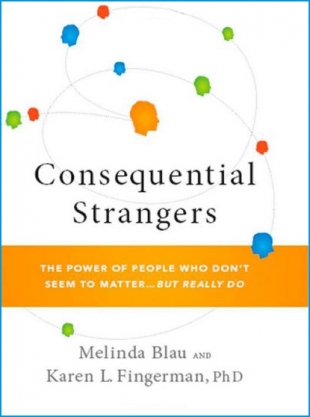"We the users, along with — and because of — the entrepreneurs who continue to dream up new sites and software, use the Internet as an instrument of connection, not merely information. The proliferation of online communities and the growing popularity of social networking sites speak volumes about our need to connect to a variety of people, not just our loved ones. Far from squelching our social instincts, digital technology has forever changed how we 'do' relationships and increased our aptitude, and hunger, for connection. Like the telephone, the Internet has become but another, albeit much more quickly diffused, mode of connection. We blog, we '1M,' we text, we Skype, we send winks and pokes. We have our private conversation in public. If, as many social scientists agree, everyday interactions are vital to making and sustaining our connections, we now have a host of 'relational technologies' that offer, for better or worse, what researchers call 'perpetual contact.' We're 'in touch' 24/7. We talk to each other in transit, when we're at the airport or on the train, or in whatever down moments we feel bored.
"Seeing Theodora Stites in 2007, at home on her couch, clicking away on her laptop — a nightly ritual — brings to mind a question Schrage asked executives only a decade earlier: 'What happens when everybody in the company has their own homepage?' Stites has several — on MySpace, Facebook, Twitter, Cyworld ('big in Asia'), to name a few. 'I need to belong to all of them because each site enables me to connect to people with different levels of social intimacy.' Stites, now twenty-five and living in Williamsburg, a hip gentrified section of Brooklyn, doesn't look like the kind of young woman who would have trouble finding a date on a Saturday night, nor is her social life limited to relationships in cyberspace. She merely uses technology to manage her web of connections. 'A girl I know from college is friends with my friend from college's best friend from Minnesota. They met at camp in seventh grade. The boyfriend of my friend from work is friends with one of my friends from high school. I note the connections and remind myself to 1M them later.'
"Stites doesn't think about the Internet any more than she thinks about the air she breathes. At this writing, she is an account planner at an advertising agency where she works and researches in 'the digital sphere.' Every now and then her cell phone rings, alerting her to a text message from Dodgeball.com, a service that lets its members know that a 'friend,' 'friend of a friend,' or 'crush' is within a ten-block radius, thus bringing their virtual social life into the real world, which, despite early fears, is apparently the case for most of us. She also has an account with Twitter, a perpetual news feed, summarized in 140 characters or less, of the various players in her life. Suzy's at the dentist. Lance tried a new restaurant. Steve finally chose Costa Rica over the Bahamas. Not surprisingly, the concept of consequential strangers resonates with Stites: 'Everyone I meet, everyone I sit next to. Sam from the subway. It's very easy to get someone's information and bring them into my network.' "
